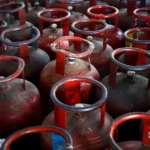
India is in talks with the United States to secure its first long-term import deal for liquefied petroleum gas (LPG), with plans to import up to three cargoes per month starting in 2026. The move reflects India’s strategy to diversify energy sources and ensure stable supplies amid a dynamic global energy market.
The proposed deal will not only help stabilize domestic LPG availability but also strengthen India’s energy security by reducing dependence on volatile regions. Government sources indicate that the agreement is expected to provide predictable supply and pricing, enabling both state-run and private energy companies to plan long-term procurement efficiently.
Analysts say that long-term contracts with the US will complement India’s existing imports from the Middle East, creating a more balanced supply chain and reducing exposure to regional geopolitical risks. LPG, widely used in domestic cooking, industrial applications, and transportation, is critical for India’s energy transition and urban development goals.
The initiative comes amid increasing global competition for clean energy resources, and India’s efforts align with its commitment to energy security, affordability, and sustainability. Officials noted that negotiations are at an advanced stage and expect final agreements to be concluded before the end of 2025, ahead of the first cargo deliveries in 2026.
Industry experts highlight that the long-term deal could also stimulate investment in storage and distribution infrastructure, further strengthening India’s domestic LPG ecosystem.
This strategic partnership signals India’s growing engagement with global energy markets and its proactive approach to securing reliable and diversified energy supplies for the coming decade.
